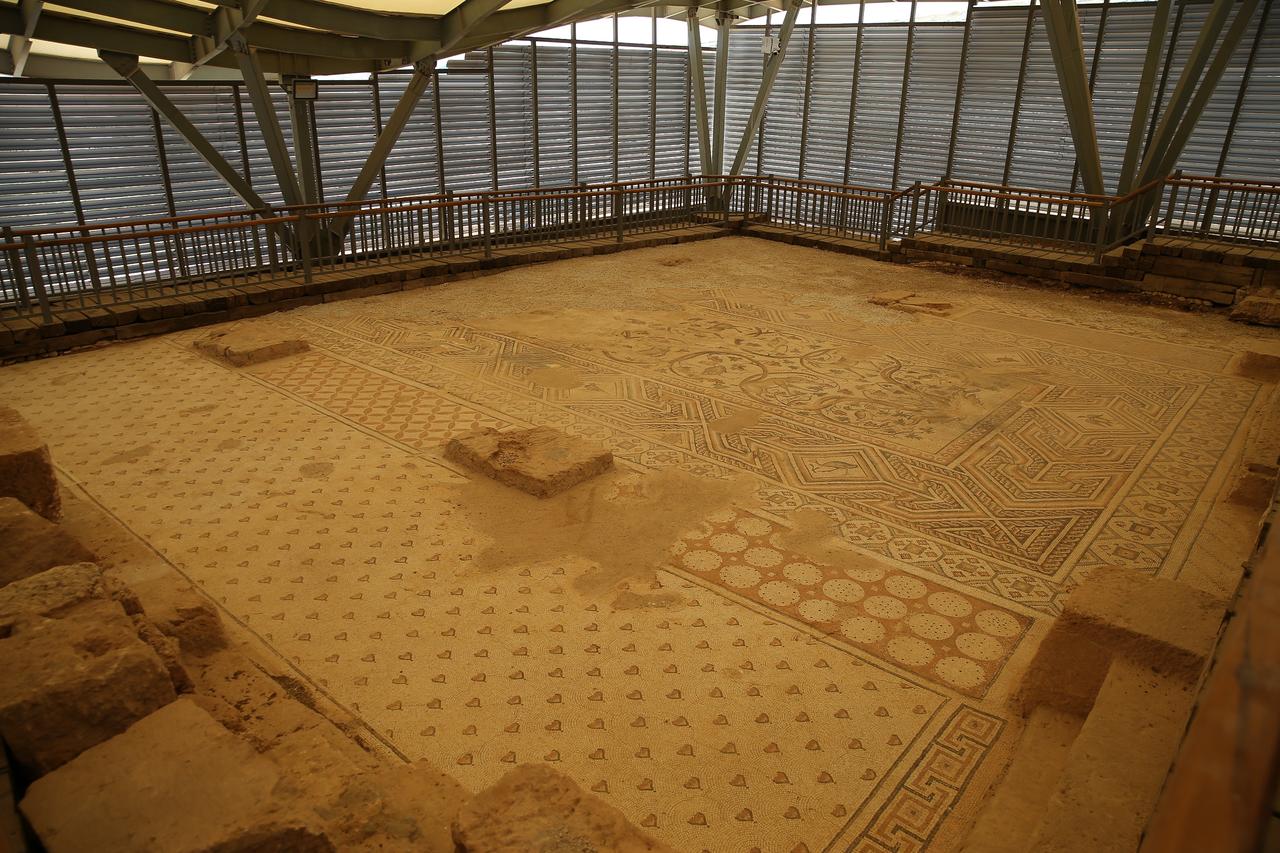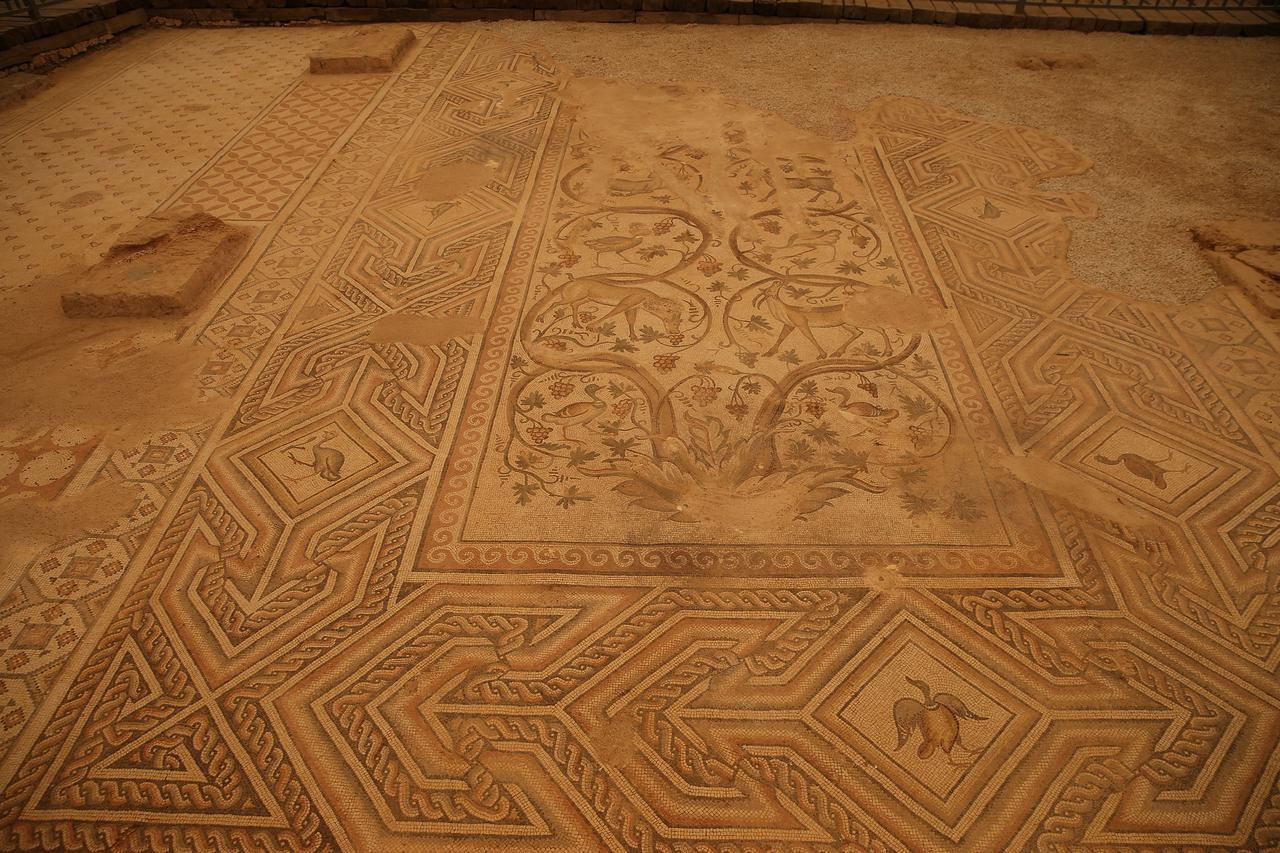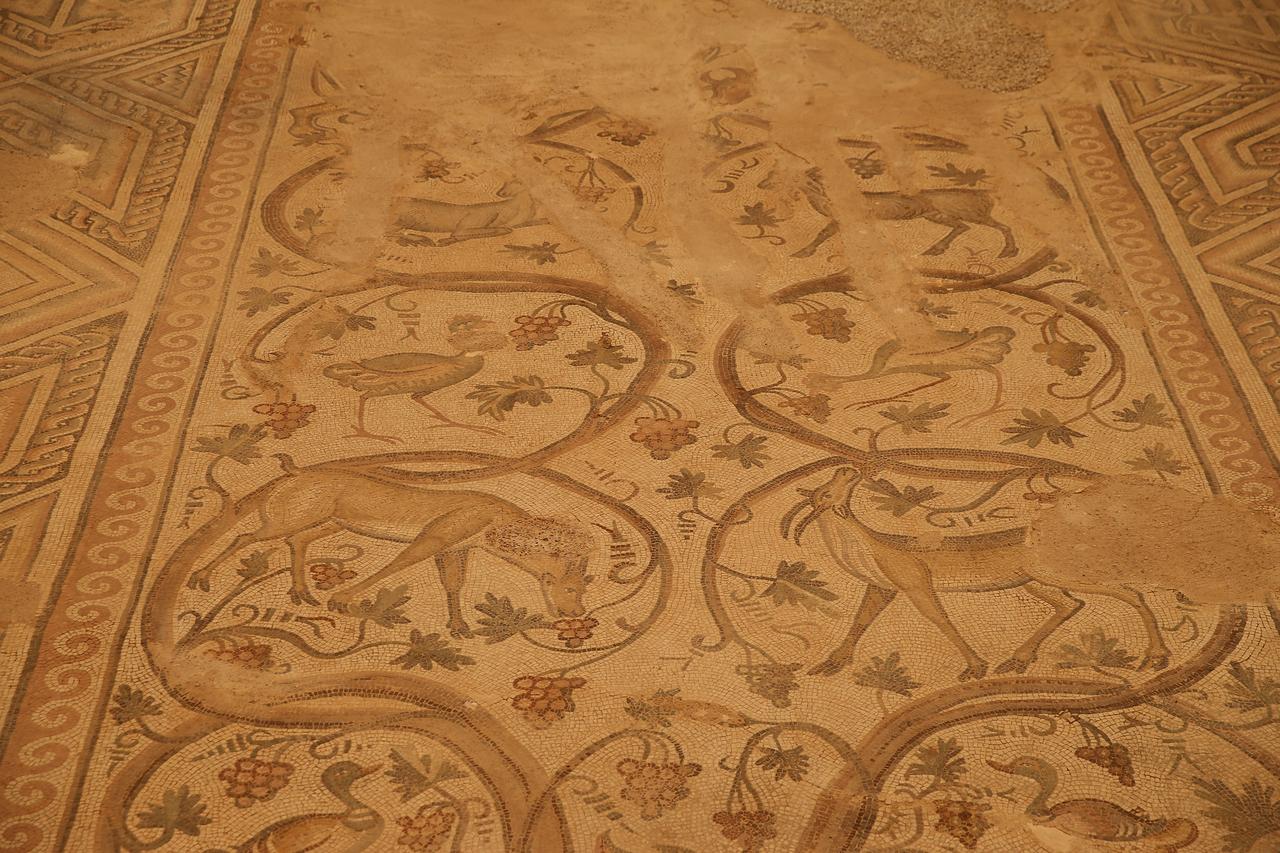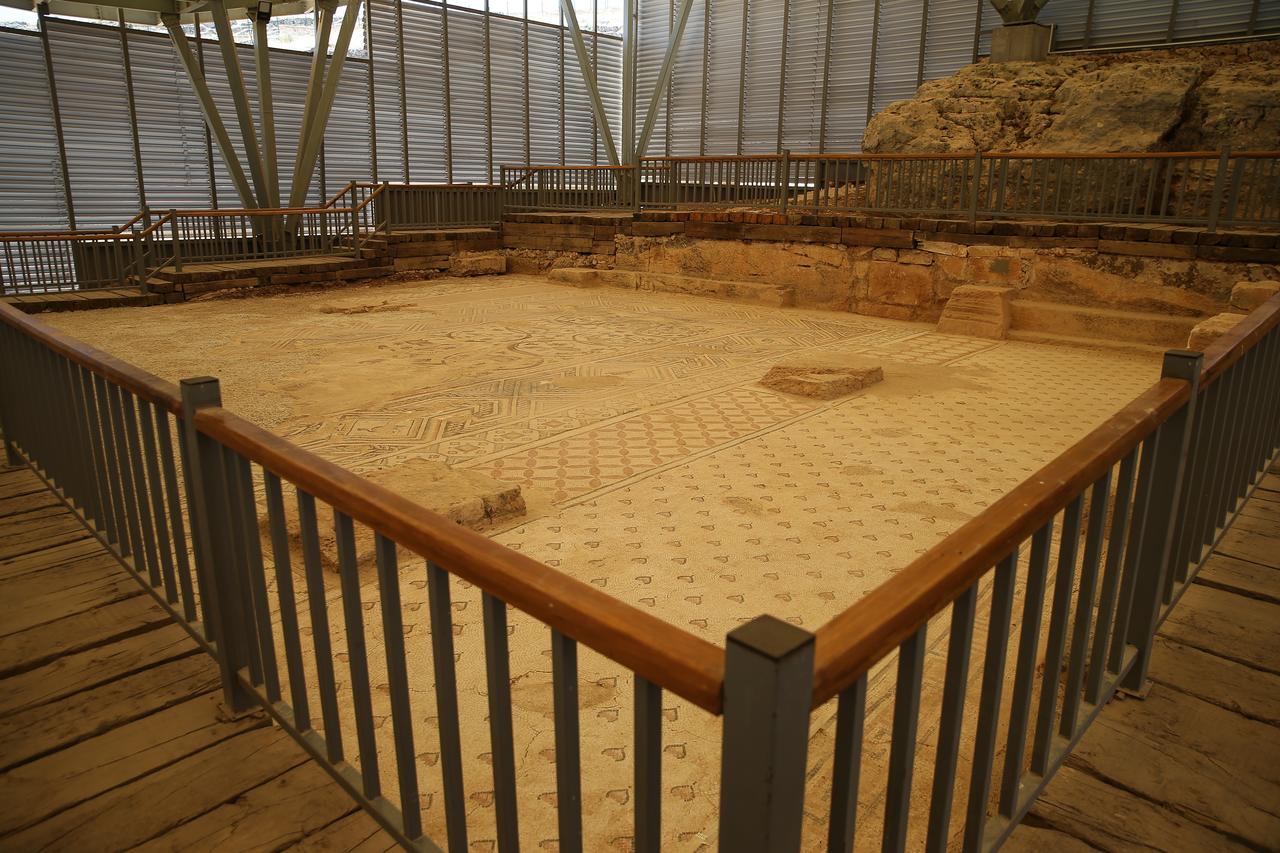
A major mosaic in the ancient city of Perre, one of the five principal cities of the Commagene Kingdom in southeastern Türkiye, has been reopened to the public following a comprehensive two-month restoration led by the Adiyaman Museum Directorate.
Discovered in 2009 during archaeological excavations, the mosaic is thought to have been part of a basilica structure from the late Roman or early Byzantine period. Measuring 125 square meters, the piece stands out for both its artistic complexity and its rare preservation as a single, intact surface.

Originally restored in 2021 by teams from the Gaziantep Regional Directorate of Restoration and Conservation Laboratory under the Ministry of Culture and Tourism, the mosaic had been affected by surface contamination and natural environmental wear. The latest round of conservation focused on reversing this damage and restoring its original features.
Experts from the Adiyaman Museum spent two months cleaning the surface, reviving the faded colors, and reinforcing areas where the structure had cracked or weakened. The restoration targeted both aesthetic revival and structural integrity, aiming to return the mosaic to its initial state as closely as possible.

The mosaic includes a variety of intricate motifs, such as heart shapes, octagonal patterns, and a striking central design featuring three-dimensional cubes—an uncommon detail in mosaics from the region. Depictions of natural elements, such as grapevines, grape clusters, deer, roosters, hens, and demoiselle cranes, offer insights into the artistic traditions and symbolic imagery of the period.
Adiyaman Museum Director Mehmet Alkan said the restoration process succeeded in bringing the mosaic back to its original appearance. “The surface deterioration was addressed, and fractured areas were reinforced,” he noted. “Our work brought back the mosaic’s original colors and patterns. The heart motifs, 3D cube designs, and the depiction of a paradise garden in the central scene have regained their vivid and authentic appearance.”

The renewed presentation makes the mosaic easier to view and appreciate, both in terms of visibility and historical interpretation. Museum officials noted that the piece ranks among the largest single-piece mosaics in Southeastern Anatolia, drawing growing attention from both local and international visitors.